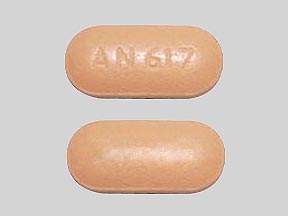
Tramadol-acetaminophen Coupons & Savings Card – Discount Prices from $15.02
Generic for: Ultracet
My prescription
Edit
37.5-325MG, Tramadol-acetaminophen (60 Tablets)
Select pharmacy

CVS
$20.46
COUPON PRICE
Albertsons
$15.02
COUPON PRICE
Walgreens
$15.60
COUPON PRICE
Walmart
$58.84
COUPON PRICETramadol-acetaminophen savings card
Show this card to your pharmacist
Albertsons
$15.02
BIN
ID
PCN
GRP
011867
LHD2E20D24
HT
LABH001
Powered by
More prescriptions for pain
More prescriptions for pain
Tramadol-acetaminophen dosage forms
Dosage Quantity Price from Per unit 37.5-325MG 60 Tablets $15.60 $0.26 37.5-325MG 12 Tablets $10.32 $0.86 37.5-325MG 15 Tablets $10.65 $0.71 37.5-325MG 20 Tablets $11.20 $0.56 37.5-325MG 30 Tablets $12.30 $0.41 37.5-325MG 90 Tablets $18.90 $0.21
| Dosage | Quantity | Price from | Per unit |
|---|---|---|---|
| 37.5-325MG | 60 Tablets | $15.60 | $0.26 |
| 37.5-325MG | 12 Tablets | $10.32 | $0.86 |
| 37.5-325MG | 15 Tablets | $10.65 | $0.71 |
| 37.5-325MG | 20 Tablets | $11.20 | $0.56 |
| 37.5-325MG | 30 Tablets | $12.30 | $0.41 |
| 37.5-325MG | 90 Tablets | $18.90 | $0.21 |
Tramadol-acetaminophen Warnings
The safety information for Ultracet (tramadol/acetaminophen) is crucial for ensuring its proper use and minimizing potential risks. Below are important warnings and precautions to consider:
Addiction and Misuse Risks: Ultracet can be habit-forming, leading to addiction, misuse, and physical dependence. Increased tolerance may require higher doses for pain relief. Individuals with a personal or family history of substance abuse or mental health conditions should avoid this medication if alternatives exist.
Breathing Problems: This medication can cause serious breathing issues, including slowed or irregular breathing, which can be life-threatening. It is essential to adhere strictly to the prescribed dosage and keep the medication out of children's reach. In case of accidental ingestion by a child, contact the poison control center immediately at 1-800-222-1222.
Risks for Children: Some children may metabolize Ultracet too quickly, leading to severe breathing problems or death. It is not recommended for children under 12, or those aged 12-18 with certain risk factors such as obesity or sleep apnea.
Pregnancy and Withdrawal in Infants: Long-term use during pregnancy can cause withdrawal symptoms in newborns, which can be fatal. Pregnant individuals should discuss potential risks with their healthcare provider.
Interactions with Other Substances: Ultracet can interact with other medications, potentially leading to severe side effects. It is vital to consult with a healthcare provider before starting any new medications or supplements and avoid alcohol consumption to prevent serious reactions such as slowed breathing or extreme sedation.
Liver Damage: Acetaminophen in Ultracet may cause liver failure, especially when taking more than one acetaminophen-containing product or exceeding 4 grams per day. Seek medical help immediately if you suspect an overdose.
Serotonin Syndrome: Combining Ultracet with certain drugs like antidepressants can lead to serotonin syndrome, a potentially life-threatening condition. Watch for symptoms like rapid heart rate, sweating, or confusion, and seek medical attention if they occur.
Seizures: Ultracet can increase the risk of seizures, particularly in those with a history of seizures or using medications that may induce seizures. Inform your healthcare provider of any risk factors.
Suicide Risk: This medication should not be used by individuals with a history of depression, suicidal thoughts, or substance abuse, as it may exacerbate these conditions.
Other Medical Conditions: Ultracet may cause adrenal insufficiency, low blood pressure, and heightened sedation in individuals with head injuries. Report symptoms like nausea, dizziness, or extreme sedation to your provider.
Digestive Concerns: Those with gastrointestinal blockages should avoid Ultracet due to potential exacerbation of these conditions.
Operating Machinery: Ultracet can impair cognitive and motor skills. Avoid driving or using heavy machinery until you are familiar with the medication's effects on you.
Allergic Reactions: Serious allergic reactions may occur. If you experience symptoms like hives or difficulty breathing, seek emergency medical care immediately.
Skin Reactions: Rarely, Ultracet can cause severe skin reactions. Discontinue use and seek medical attention if you notice any rashes or blistering.
These precautions are essential for the safe use of Ultracet. Always consult with your healthcare provider to address any concerns or questions regarding this medication.
Tramadol-acetaminophen Side Effects
Common side effects:
- Constipation
- Sleepiness
- Increased sweating
- Diarrhea
- Nausea
- Poor appetite
- Dizziness
Less common but important to monitor:
- Dry mouth
- Stomach pain
- Indigestion or upset stomach
- Weakness
- Fatigue
- Headache
- Anxiety
- Shakiness
- Trouble sleeping
- Itching
- Prostate problems
Serious side effects:
- Trouble breathing
- Fast heartbeat
- Chest pain
- Swelling of the face, tongue, or throat
- Extreme sleepiness
- Increased irritability
- Increased body temperature
- Trouble walking
- Stiff muscles
- Mental changes such as confusion
Tramadol-acetaminophen Interactions
Tramadol and Acetaminophen are often combined to manage moderate to moderately severe pain. While this combination can be effective, it's important to be aware of potential interactions and risks associated with their use.
Liver Health Considerations
Acetaminophen, a common pain reliever, has been linked to cases of acute liver failure, sometimes resulting in liver transplant or death. The risk increases when consuming more than 4,000 milligrams per day or when combining multiple acetaminophen-containing products. Individuals with existing liver disease or those who consume alcohol regularly are at a higher risk. It's crucial to monitor acetaminophen intake and avoid exceeding the recommended daily dose.
Risk of Serotonin Syndrome
Tramadol affects serotonin levels in the brain. When taken with other medications that influence serotonin, such as certain antidepressants (SSRIs, SNRIs, TCAs), migraine medications (triptans), or even herbal supplements like St. John's Wort, there's an increased risk of serotonin syndrome. This potentially life-threatening condition can cause symptoms like agitation, hallucinations, rapid heartbeat, high blood pressure, fever, nausea, vomiting, diarrhea, muscle rigidity, dizziness, tremor, and seizures. If you experience any of these symptoms, seek medical attention immediately.
Increased Seizure Risk
Tramadol has been associated with an increased risk of seizures, especially when combined with medications that lower the seizure threshold. These include certain antidepressants, other opioids, neuroleptics, and drugs that impair serotonin metabolism. Individuals with epilepsy, a history of seizures, or conditions that predispose them to seizures should use tramadol with caution.
Interactions with Central Nervous System (CNS) Depressants
Combining tramadol with other CNS depressants, such as benzodiazepines, other opioids, muscle relaxants, general anesthetics, antipsychotics, or alcohol, can lead to profound sedation, respiratory depression, coma, or even death. It's essential to inform your healthcare provider about all medications and substances you're using to avoid these serious interactions.
General Recommendations
Always consult with your healthcare provider before starting or stopping any medications. Be transparent about all the drugs and supplements you're taking to ensure safe and effective pain management. Monitoring and adhering to prescribed dosages can significantly reduce the risk of adverse effects associated with tramadol and acetaminophen.
